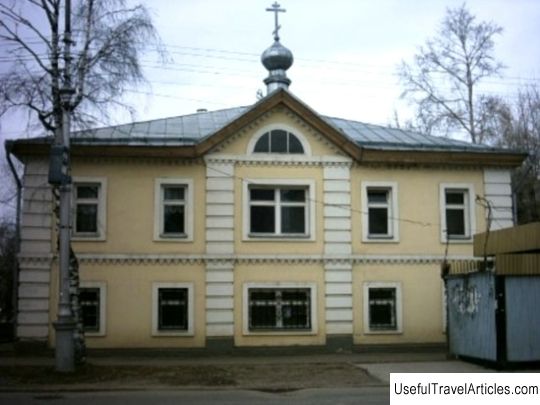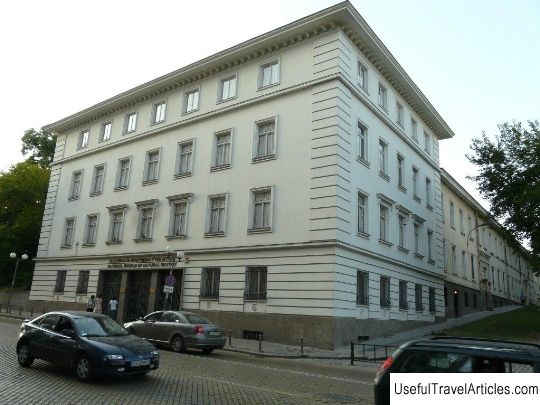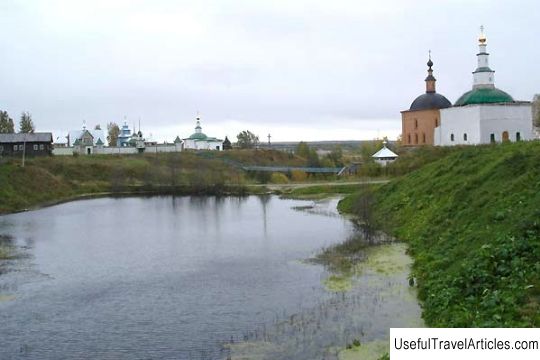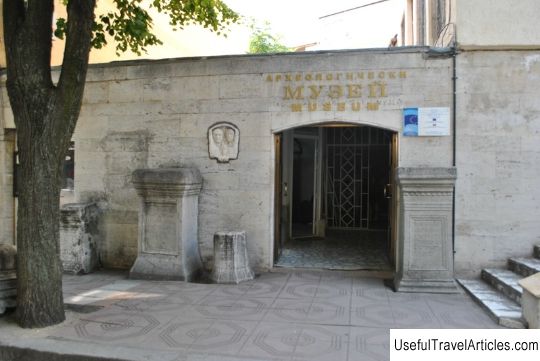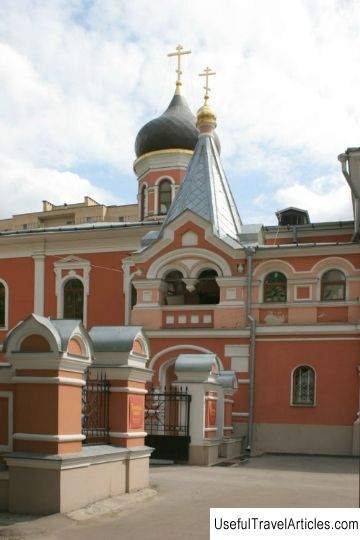Trinity Stefano-Ulyanovsk Monastery description and photos - Russia - North-West: Komi Republic
Rating: 8,1/10 (8123 votes) 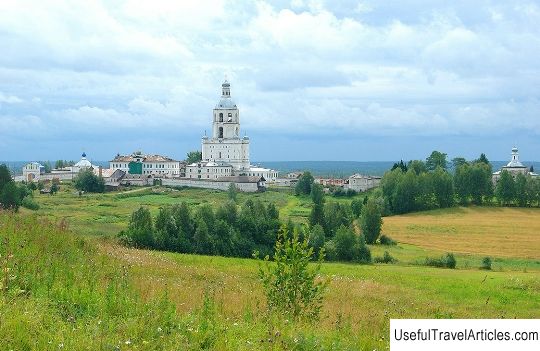
Trinity Stefano-Ulyanovsk Monastery description and photos - Russia - North-West: Komi Republic. Detailed information about the attraction. Description, photos and a map showing the nearest significant objects. Photo and descriptionThe Trinity Stefano-Ulyanovsk monastery, according to church legends - a desert, was founded by Stephen of Perm at the end of the 14th century. The monastery was built in order to spread Christianity in the Upper Vychegda. In the Ust-Kulom region there is a legend according to which the area where the monastery is located is named in honor of the girl Ulyania. She drowned herself in the Vychegda River during the raids of the Ugrians from beyond the Urals, not wanting to get caught by the enemies. It was opposite the place where she died and the monastery was built. In the 1660s, the Moscow priest Fyodor Tyurnin (in monasticism Filaret) with his four sons (Nikon, Guriy, Ivan, Stephen) restored the Spasskaya Ulyanovsk Hermitage. In 1667, a wooden church was built in honor of the Image of the Savior Not Made by Hands, icons and bells for which were brought from Moscow. In the first half of the 19th century, the wooden churches, built at the end of the 17th century, fell into disrepair, and in their place in 1858 a new church with thrones was built in honor of the Image of Christ Not Made by Hands and in honor of the Praise of the Most Holy Theotokos. For 10 years, in the period from 1886 to 1876, there was a collection of donations throughout Russia for the construction of the Ulyanovsk monastery. Rumors of miraculous healings and the appearance of the icon increased the influx of pilgrims into the monastery. The monastery was mainly visited by peasants from Ust-Sysolsky, Pechora, Yarensky districts. Income from donations and other fees in the monastery in 1901 amounted to more than 14 thousand rubles. The monastic economy also brought profit. Since 1875, the monastery began to breed the Kholmogory breed of cows. There were also horses in the monastery. The monastery owned 2 mills, a brick factory, workshops for sewing shoes and clothes. In 1878, a water pumping station was built on a steam engine. Fishing and horticulture were developed among the monks. Solovetsky monks (among them was the self-taught architect Theodosius), launched an active work on the construction of the monastery. In the years 1869-1875, a stone two-story, five-domed Trinity Cathedral was built by the architect A. Ivanitsky. On the top floor there was a bronze throne in the name of the Holy Life-Giving Trinity. The author of the iconostasis icons is the court artist V.M. Poshekhonov. In 1872-1878, a church-bell tower with 17 bells was erected. In 1877-1879 the monastery was surrounded by a stone wall with a covered gallery and corner towers. In 1886, a stone cemetery church was built in honor of the Assumption of the Virgin. A stone chapel was built next to this church. In 1878, outside the monastery wall, construction of a hotel began. A house was also built for the workers of the monastery. In 1882, a male parish school was opened in the monastery, and an almshouse in 1907. In 1889, 70 monks and novices lived in the monastery. 2 fraternal corps were built for them. In terms of the number of monks, the monastery was second only to the Vologda Gornitsko-Uspensky monastery. In terms of land area in the Vologda diocese, it occupied the fourth place. After the revolution, the activities of the monastery gradually began to curtail. In June 1923, the churches were sealed. A red banner was hoisted on the dome of the bell tower. In the 1930s, Trinity Cathedral and almost the entire monastery wall were dismantled. During the Great Patriotic War, there was a hospital in the Ulyanovsk monastery, and later - a house for the mentally ill. In the 1960s, the first floor of the Trinity Cathedral was destroyed. In 1969, the monastery buildings were taken under state protection as a monument of church architecture. But this was just a convention. The monastery was destroyed. In the late 1980s, they wanted to use the buildings of the monasteries to organize a boarding house for the Syktyvkar plant "Orbita". In 1994, a group of monks headed by Fr. Pitirim, they reopened the monastery service. Today, the restored monastery is home to several dozen novices and monks who are engaged in construction and restoration work. In 1996, a religious school was opened at the Ulyanovsk monastery to train cadres of clergy. Valuable cult objects taken from the Ulyanovsk monastery in the last century and kept in the funds of the National Museum were solemnly returned to the monastery. Among the unique items are the staff of Archimandrite Matthew, the personal cross of Metropolitan Philaret, the figure of Jesus Christ in a dungeon made of wood. Today, the monastery includes 6 operating churches and one chapel, 24 monks, 5 priests, 2 deacons, about 20 workers live here. The monastery owns 550 hectares of land on which potatoes and vegetables are grown. The monks keep livestock and pick mushrooms and berries. There is a hotel at the monastery where tourists and pilgrims can stay for several days.      We also recommend reading Vienna synagogue (Synagogue) description and photos - Austria: Vienna Topic: Trinity Stefano-Ulyanovsk Monastery description and photos - Russia - North-West: Komi Republic. |
